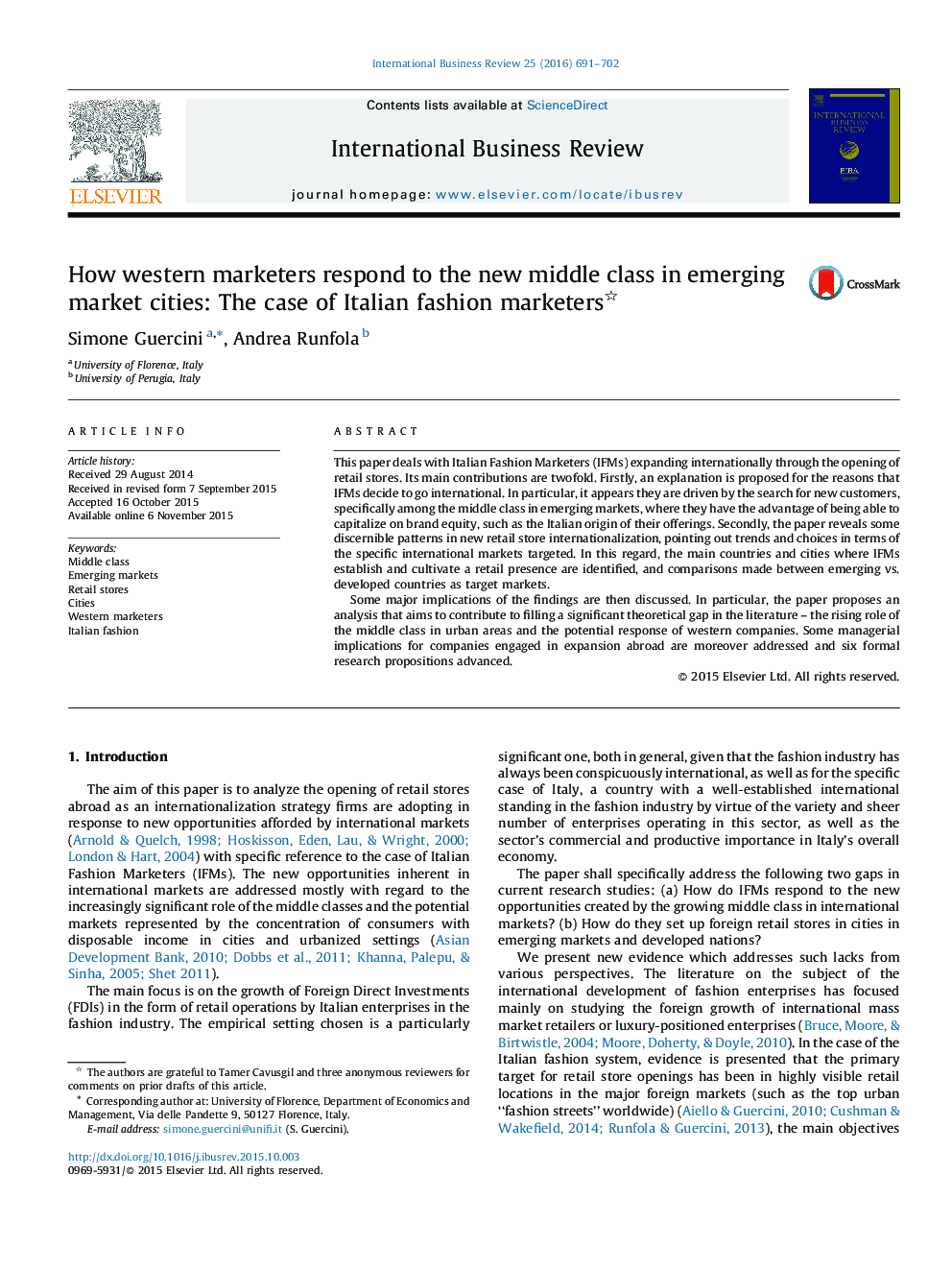| Article ID | Journal | Published Year | Pages | File Type |
|---|---|---|---|---|
| 1000204 | International Business Review | 2016 | 12 Pages |
•The paper analyzes findings from panel data from 2004 to 2013 on 300 brands representing 230 companies in 81 countries and 315 cities with 2127 retail stores.•The growth and concentration of new middle-class consumers in emerging markets represents a major driving force behind IFMs foreign development.•Cities represent a unit of analysis in the selection of location for IFMs foreign development through store openings.•A relation exists between the choice of a city (or cities) and the aggregate market potential of the country.•IFMs foreign development is fostered by the possibility of exploiting brand equity at an international level and by crisis in the domestic market.
This paper deals with Italian Fashion Marketers (IFMs) expanding internationally through the opening of retail stores. Its main contributions are twofold. Firstly, an explanation is proposed for the reasons that IFMs decide to go international. In particular, it appears they are driven by the search for new customers, specifically among the middle class in emerging markets, where they have the advantage of being able to capitalize on brand equity, such as the Italian origin of their offerings. Secondly, the paper reveals some discernible patterns in new retail store internationalization, pointing out trends and choices in terms of the specific international markets targeted. In this regard, the main countries and cities where IFMs establish and cultivate a retail presence are identified, and comparisons made between emerging vs. developed countries as target markets.Some major implications of the findings are then discussed. In particular, the paper proposes an analysis that aims to contribute to filling a significant theoretical gap in the literature – the rising role of the middle class in urban areas and the potential response of western companies. Some managerial implications for companies engaged in expansion abroad are moreover addressed and six formal research propositions advanced.
